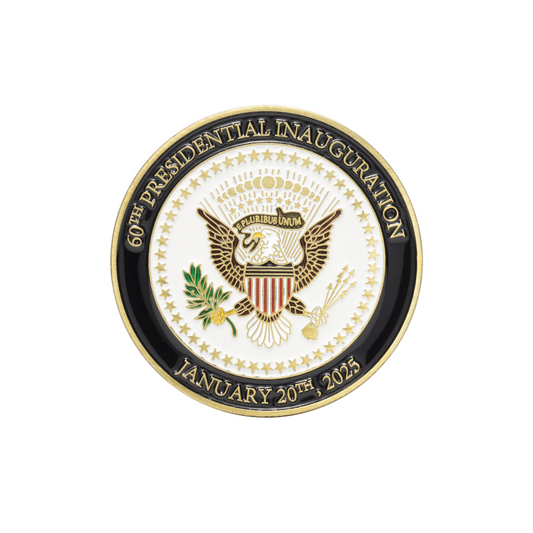
How to Plan a Military Retirement Ceremony: A Step-by-Step Guide
Renita WingfieldA military retirement ceremony is a significant and honorable event that marks the culmination of a service member's career. It celebrates their dedication, sacrifices, and achievements throughout their years of service. Planning such a ceremony involves careful attention to detail and a deep understanding of military traditions. This comprehensive guide provides step-by-step instructions on how to plan a military retirement ceremony, ensuring that the event is memorable and fitting for the honoree.
Understanding the Importance of a Military Retirement Ceremony
The Significance of the Ceremony
A military retirement ceremony is more than just a farewell; it is a formal acknowledgment of a service member’s dedication and contributions to their country. The ceremony serves as an opportunity to honor the retiree’s service, reflect on their achievements, and express gratitude for their sacrifices.
- Celebrating Service: The ceremony highlights the retiree’s accomplishments and milestones, providing a platform to celebrate their career and the impact they have made within the military.
- Tradition and Respect: Military retirement ceremonies are steeped in tradition and protocol, emphasizing the values of honor, respect, and duty. These elements are crucial in conveying the importance of the retiree’s contributions.
Components of a Military Retirement Ceremony
A typical military retirement ceremony includes several key components, each serving a specific purpose in honoring the retiree:
- Introduction and Welcome: The ceremony begins with an introduction and welcome by a senior officer or master of ceremonies, setting the tone for the event.
- Reading of Service Record: The retiree’s service record is read aloud, highlighting their achievements, assignments, and milestones throughout their career.
- Presentation of Awards and Honors: Any awards, medals, or honors earned by the retiree are formally presented during the ceremony, recognizing their contributions and accomplishments.
- Retirement Certificate and Flag Presentation: The retiree receives a retirement certificate and an American flag, symbolizing their transition from active service to retirement.
- Speeches and Tributes: Colleagues, family members, and friends may give speeches or tributes, sharing personal stories and expressing gratitude for the retiree’s service.
- Retiree’s Remarks: The retiree has an opportunity to address the audience, reflecting on their career and expressing thanks to those who supported them.
- Conclusion and Reception: The ceremony concludes with a formal dismissal and may be followed by a reception or gathering to celebrate the retiree’s achievements.
Step-by-Step Guide to Planning a Military Retirement Ceremony
Planning a military retirement ceremony requires careful preparation and coordination. Here is a step-by-step guide to help you organize a successful event:
Step 1: Set the Date and Venue
The first step in planning a military retirement ceremony is to establish a date and choose an appropriate venue. These decisions set the foundation for all subsequent planning activities and should be made in consideration of several factors:
- Date Selection: Selecting a date for the ceremony involves balancing the retiree’s preferences with the availability of key attendees such as family, friends, and military colleagues. It’s important to allow sufficient time for planning and preparation, typically several months in advance. Consider significant dates or anniversaries that might add meaning to the ceremony, and avoid scheduling conflicts with holidays or other military events that could affect attendance.
- Venue Choice: The venue should be appropriate for the size, formality, and significance of the ceremony. Common venue options include military bases, which provide a formal and traditional setting; community centers, which may offer a more intimate and accessible location; or banquet halls, which can accommodate larger gatherings and receptions. When selecting a venue, consider factors such as capacity, amenities, accessibility, and any specific requirements for military ceremonies.
Step 2: Determine the Budget
Establishing a budget is essential to ensure that all aspects of the ceremony are covered without overspending. Consider the following expenses:
- Venue Rental: Include costs for renting the venue, as well as any additional fees for equipment, audio-visual services, or security. Military venues may have specific protocols or fees that need to be accounted for in the budget.
- Catering and Refreshments: Plan for food and beverages for the reception, taking into account the number of guests and any dietary restrictions. Consider the style of catering, whether it will be a seated meal, buffet, or light refreshments, and obtain quotes from different catering services to find the best fit for your budget.
- Decorations and Supplies: Allocate funds for decorations, such as flags, banners, and floral arrangements, that will enhance the ambiance and formality of the ceremony. Additionally, budget for programs, invitations, and other supplies necessary for the event.
- Awards and Gifts: Budget for any awards, plaques, or gifts to be presented to the retiree during the ceremony. These items should reflect the retiree’s achievements and service and may include personalized or engraved items.
Step 3: Create a Guest List

Creating a guest list is an important step in planning the ceremony, as it determines the size and scope of the event.
- Family and Friends: Include immediate family members, close friends, and others who have supported the retiree throughout their military journey. These individuals are integral to the retiree’s support network and should be prioritized on the guest list.
- Colleagues and Superiors: Invite colleagues, supervisors, and mentors who have worked with the retiree and can speak to their achievements and contributions. Their presence is a testament to the retiree’s professional relationships and accomplishments.
- Special Guests: Consider inviting special guests, such as local dignitaries, representatives from veteran organizations, or community leaders, to honor the retiree’s service. These guests can add prestige and significance to the ceremony.
Step 4: Plan the Ceremony Program
Develop a detailed program for the ceremony, outlining the sequence of events and ensuring that all necessary elements are included.
- Master of Ceremonies: Appoint a master of ceremonies to guide the event, introduce each segment, and maintain the flow of the ceremony. This individual should be comfortable speaking in front of an audience and familiar with military protocols and traditions.
- Speakers and Tributes: Arrange for speakers to deliver speeches and tributes, sharing personal stories and expressing gratitude for the retiree’s service. Speakers may include family members, colleagues, and military officials. Ensure they are prepared and aware of their roles and the expected length of their speeches.
- Music and Visuals: Plan for music or visual presentations that enhance the ceremony and celebrate the retiree’s career. Consider including a slideshow of photographs, video messages from distant friends and family, or live musical performances. Ensure that all technical aspects, such as sound and projection equipment, are arranged and tested in advance.
Step 5: Coordinate Awards and Honors
Coordinate the presentation of any awards, medals, or honors to be given to the retiree during the ceremony.
- Awards Presentation: Ensure that all awards and medals are ready for presentation, along with any accompanying certificates or documentation. Verify that the details on the awards, such as names and dates, are accurate and correct.
- Flag Presentation: Arrange for the presentation of the American flag, which is often a significant and symbolic part of the ceremony. The flag may be folded and presented to the retiree as a gesture of appreciation for their service. Coordinate with military personnel or honor guards to perform this important task.
Step 6: Arrange Catering and Refreshments
Plan for catering and refreshments for the reception, taking into account the preferences and dietary needs of the retiree and guests.
- Menu Selection: Choose a menu that accommodates a variety of tastes and dietary restrictions, ensuring that all guests can enjoy the offerings. Consider options for appetizers, main courses, desserts, and beverages, and work with the retiree to incorporate any personal preferences or favorite dishes.
- Catering Services: Coordinate with a catering service to provide food and beverages, ensuring timely delivery and setup for the reception. Discuss service options, such as buffet-style or plated meals, and confirm details such as staffing, equipment, and cleanup responsibilities.
Step 7: Send Invitations
Send out invitations to all guests well in advance of the ceremony, providing them with the necessary details and RSVP information.
- Invitation Design: Design invitations that reflect the formality and significance of the ceremony, including all relevant details such as date, time, location, and dress code. Invitations can be printed or digital, depending on preferences and budget. Ensure that the design is clear and professional, setting the tone for the event.
- RSVP Management: Keep track of RSVPs to ensure an accurate headcount for seating, catering, and supplies. Use a spreadsheet or event management software to organize responses and communicate any necessary updates to guests. Follow up with invitees who have not responded to ensure their attendance and address any questions they may have.
What to Wear to a Military Retirement Ceremony
Understanding what to wear to a military retirement ceremony is crucial for both the retiree and the guests. The attire should reflect the formality and significance of the event.
Attire for the Retiree
- Dress Uniform: The retiree typically wears their dress uniform, symbolizing their pride and service. The uniform should be clean, pressed, and adorned with all appropriate medals and insignia.
- Personal Grooming: The retiree should adhere to military grooming standards, ensuring a neat and professional appearance.
Attire for Guests
- Formal or Semi-Formal Attire: Guests should dress in formal or semi-formal attire to show respect for the occasion. Men may wear suits or dress slacks with a collared shirt and tie, while women can opt for a conservative dress, skirt and blouse, or pantsuit.
- Appropriate Colors: Neutral or subdued colors are recommended to maintain a respectful and elegant appearance.
Planning a military retirement ceremony requires careful attention to detail and a deep understanding of military traditions. By following this step-by-step guide, you can organize a memorable and meaningful event that honors the retiree’s service and achievements. From selecting the date and venue to coordinating awards and refreshments, each aspect of the ceremony contributes to a fitting tribute to the retiree’s dedication and commitment to their country.
Key Takeaways
- A military retirement ceremony is a formal event celebrating a service member's career and achievements.
- Plan the ceremony with attention to detail, including date, venue, budget, and guest list.
- Coordinate the ceremony program, including awards presentation, speeches, and music.
- Understand what to wear to a military retirement ceremony, emphasizing formal or semi-formal attire.
- Ensure all elements reflect the formality and significance of the retiree's service and contributions.

Discover the Honor Behind Every Coin
At Command Challenge Coins, we're not just creating tokens; we're forging symbols of achievement, unity, and recognition. Our commitment to excellence is mirrored in every meticulously crafted coin, embodying the values and stories of those who carry them. From the rich history embedded in military traditions to the contemporary applications across various sectors, challenge coins represent more than just metal—they symbolize a legacy of honor and camaraderie.
Have a design in mind or need guidance on creating your unique challenge coin? Get a free quote today to consult with our specialists.






















